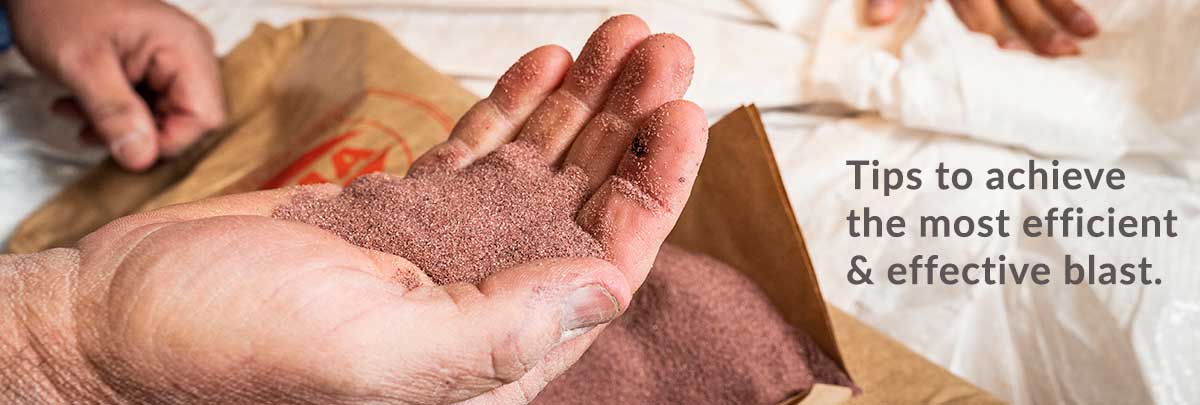You’re currently viewing the Americas website.
You’re currently viewing the Americas website.
Would you like to switch countries or language?Blast Abrasives
Topics
Waterjet Cutting
Topics
Resources
Categories
Types
Categories
Topics
Abrasive Blasting Tech Tips English Global
The ABC of Abrasive Blasting
PART A – SELECTING THE CORRECT ABRASIVE
A common method for preparing steel substrates prior to the application of protective coatings is abrasive blast cleaning. In order to achieve the required standard of preparation, it is important to select the most appropriate abrasive for the job in hand.
Factors which will influence the choice of abrasive include the specified surface profile and quality of finish.
Various types of abrasive offer the ability to produce a range of profiles, but not all will guarantee high standards of surface cleanliness.
In comparison to relatively soft slags, tougher less friable abrasives which do not easily break down in use, will reduce the risk of embedment within the profile and facilitate a cleaner surface.
The health and safety of blast cleaning operatives should be high on the list of priorities during the process of abrasive selection.
Tougher abrasives which do not easily break down will produce lower dust levels, giving the operator better visibility, thus producing a safer working environment.
Abrasives containing high levels of free silica or traces of heavy metals such as beryllium may be hazardous to health. Material Safety Data Sheets should therefore be consulted. It is also important to be aware of disposal regulations governing any abrasive under consideration.
When selecting your abrasive, site conditions should be given careful consideration. For instance, abrasives which produce high dust levels may not be suitable for working within confined spaces.
Also, in cases where there is limited access for removal of spent abrasive, a product offering low consumption rates, hence less quantities expended, would be most appropriate.
Some projects may offer the opportunity to consider abrasive recycling.
First of all, the client’s specification should not contain any objections. Site conditions would need to be suitable for containing the material at the work site and storing it at a dry location prior to reprocessing.
The project would need to be of a suitable size in order to justify the initial expense of installing an appropriate recycling unit. If these conditions are satisfied, an abrasive suitable for multiple uses may be considered.
In summary, abrasive selection should always consider health and safety matters as well as customer requirements. If in doubt, you should consult the abrasive manufacturer.
 GMA ToughBlast™
GMA ToughBlast™ GMA SpeedBlast™
GMA SpeedBlast™ GMA NewSteel™
GMA NewSteel™ Oil & Gas
Oil & Gas Industrial Fabrication & Maintenance
Industrial Fabrication & Maintenance Marine & Ship Building
Marine & Ship Building TruCost Blast Calculator
TruCost Blast Calculator Product Selector
Product Selector Brochure | GMA Garnet Blast Abrasives
Brochure | GMA Garnet Blast Abrasives News: GMA's Roadmap to Sustainability
News: GMA's Roadmap to Sustainability GMA ExcelCut
GMA ExcelCut GMA ProCut™
GMA ProCut™ GMA ClassicCut™
GMA ClassicCut™ Metal fabrication
Metal fabrication Glass cutting
Glass cutting Stone cutting
Stone cutting Case Study | GMA ClassicCut | Smith and Nephew
Case Study | GMA ClassicCut | Smith and Nephew Why is Garnet the preferred abrasive in Waterjet cutting?
Why is Garnet the preferred abrasive in Waterjet cutting? Water Filtration
Water Filtration Rubber Fillers
Rubber Fillers Anti-skid Products
Anti-skid Products Ilmenite Sand
Ilmenite Sand Pyroxene
Pyroxene Rutile
Rutile